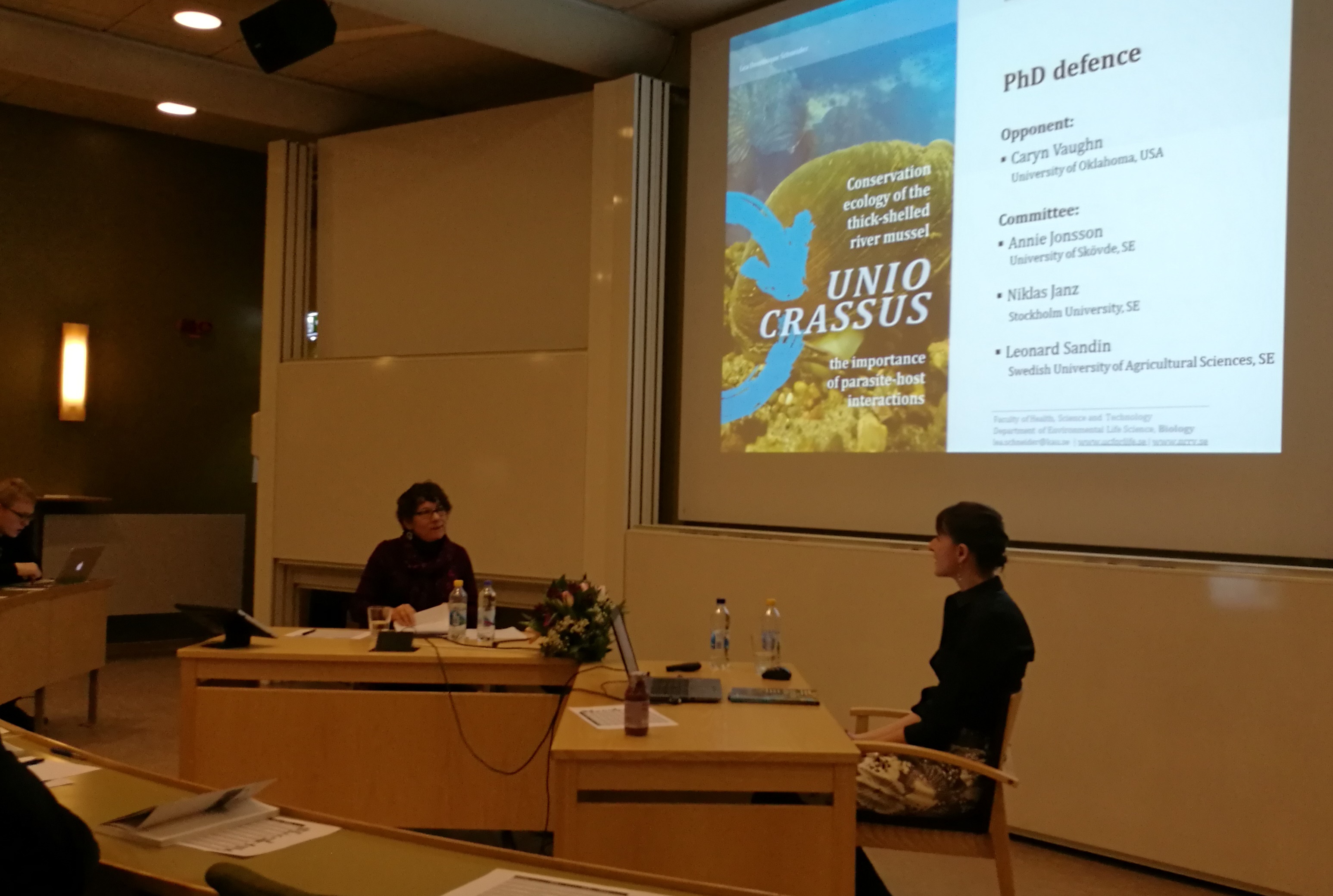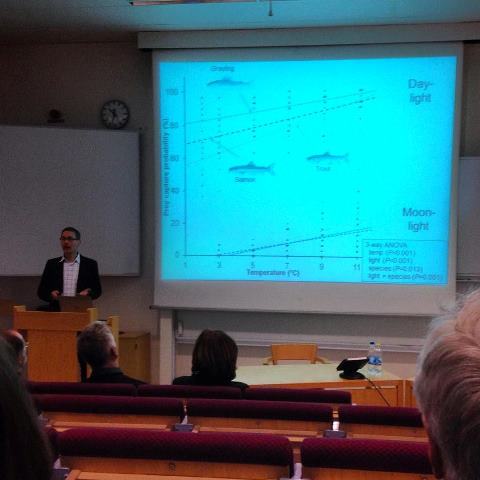Paper: Parasite–host interactions between a freshwater mussel and its host fish
Posted by Daniel Nyqvist | Projekt MålarmusslanLea Schneider, Anders Nilsson, and Martin Österling from Karlstad University, and Johan Höjesjö from University of Gothenburg, recently published the scientific article “Local adaptation studies and conservation: Parasite–host interactions between the endangered freshwater mussel Unio crassus and its host fish“ in Aquatic Conservation. In the article the authors present a study on thick shelled river mussels (Unio crassus) and their interaction with potential host fishes originating from the same or a different river than the individual mussels. In the abstract they write:
“1. Parasite–host interactions can involve strong reciprocal selection pressure, and may lead to locally adapted specializations. The highly threatened unionoid mussels are temporary parasites on fish, but local adaptation has not yet been investigated for many species.
2. Patterns of local adaptation of one of Europe’s most threatened unionoids, the thick-shelled river mussel (Unio crassus) were investigated. Eurasian minnows (Phoxinus phoxinus) from two rivers (separate drainage areas) were cross-infested in the laboratory with sympatric and allopatric mussel larvae, while bullheads (Cottus gobio), inhabiting only one of the rivers, were infested with sympatric or allopatric mussel larvae. Larval encystment, juvenile mussel excystment and survival were measured.
3. For one river, but not the other, juvenile excystment from P. phoxinus was highest when infested with sympatric mussels. The opposite pattern was found for C. gobio in this river, where juvenile excystment and post-parasitic juvenile survival from allopatric C. gobio were highest. The results thus cannot confirm local adaptation of U. crassus to P. phoxinus in the study rivers, as excystment was not consistently higher in all sympatric mussel–host combinations, whereas there were potential maladaptive signs of U. crassus in relation to C. gobio. There was no loss of encysted larvae 3 days after infestation until juvenile excystment. Most juveniles were excysted between 17 and 29 days after infestation, and the numbers of excysted juveniles increased with fish size.
4. The results have implications for parasite–host ecology and conservation management with regard to unionoid propagation and re-introduction. This includes the need to (1) test suitability and adaptation patterns between U. crassus and multiple host fish species, (2) evaluate the suitability of certain unionoids and host fish strains after more than 3 days, and (3) determine whether large fish produce more juvenile mussels than smaller fish.”
Access the paper here: “Local adaptation studies and conservation: Parasite–host interactions between the endangered freshwater mussel Unio crassus and its host fish“, or email any of the authors.





